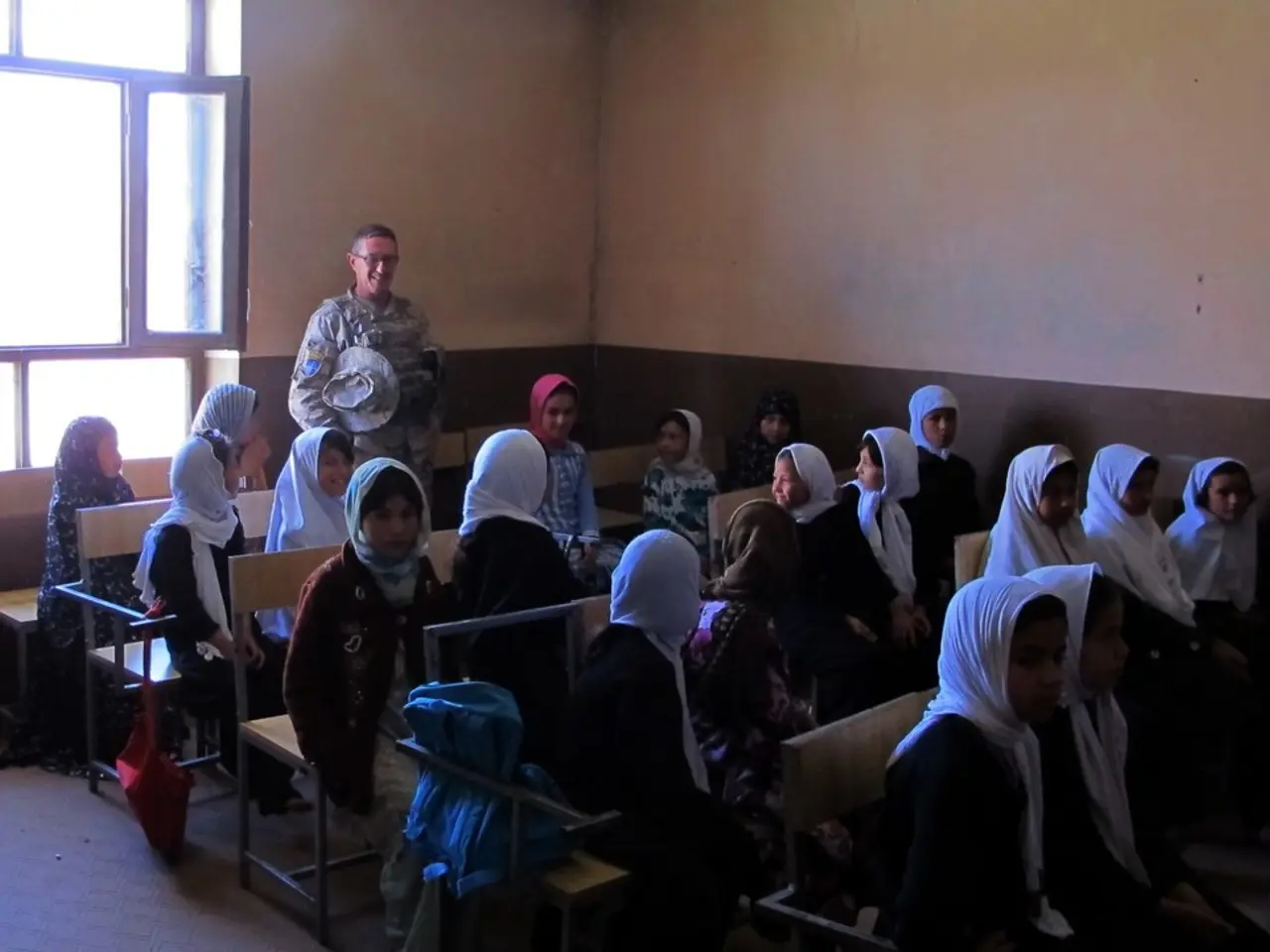Five years post-pandemic, student success rates remain below the initial benchmarks
Schools across the nation have received an infusion of $190 billion in federal COVID-19 relief aid, aiming to help students catch up after the disruptions caused by the pandemic. However, a recent report suggests that the process may be moving slower than expected.
According to the report, the share of students meeting grade-level benchmarks has remained flat since spring 2023, with only a slight uptick by spring 2025. This is a concerning trend, especially when compared to the pre-pandemic levels. For instance, 48% of 1st graders in similar schools met grade-level reading benchmarks in 2025, down from 54.5% in 2019.
The report offers some hope with small but steady gains, suggesting recovery is possible. Among 8th graders in schools where more than half the students are Black, the share meeting grade-level reading standards rose to 39.3% in spring 2025, up from 36.4% in spring 2024 and 35.6% in 2019.
Niyoka McCoy, the chief learning officer for K12, suggests that the pandemic acted as a "reset" moment, prompting educators to rethink how they help students rebuild skills. Kristen Huff, the head of measurement at Curriculum Associates, echoes this sentiment, stating that the goal should be to get all students to reach their potential, not just to return to pre-pandemic levels.
However, the report also highlights the challenges schools have been facing since the pandemic. Schools have been grappling with increased rates of chronic absenteeism and student mental health challenges. The gap between 4th and 5th grade students below grade level performance in reading and math has remained relatively unchanged since the pandemic.
The findings come from the company's i-Ready Diagnostic, which assesses students' reading and math skills and compares them with pre-pandemic averages. Huff emphasizes that the quality of the curriculum is more important than the medium (textbooks or digital tools) in closing learning gaps.
Despite these challenges, McCoy remains optimistic. She states that to get students back on track sooner, there needs to be a flip in how education is approached. Huff states that if learning trajectories do not accelerate, significant changes will not be seen in the next couple of years.
It's important to note that the report does not provide specific information about schools that achieve above-average performance in reading and mathematics despite having fewer resources. This underscores the need for further research and targeted strategies to support schools and students in need.
In conclusion, while the COVID-19 relief aid has provided much-needed support, it seems that more needs to be done to ensure that students catch up and meet grade-level expectations within the next five years. The report serves as a call to action for educators, policymakers, and community leaders to work together to accelerate learning and help students reach their full potential.
Read also:
- Impact of Alcohol on the Human Body: Nine Aspects of Health Alteration Due to Alcohol Consumption
- Understanding the Concept of Obesity
- Lu Shiow-yen's Challenging Position as Chair of the Chinese Nationalist Party (KMT) Under Scrutiny in Donovan's Analysis
- Tough choices on August 13, 2025 for those born under Aquarius? Consider the advantages and disadvantages to gain guidance








